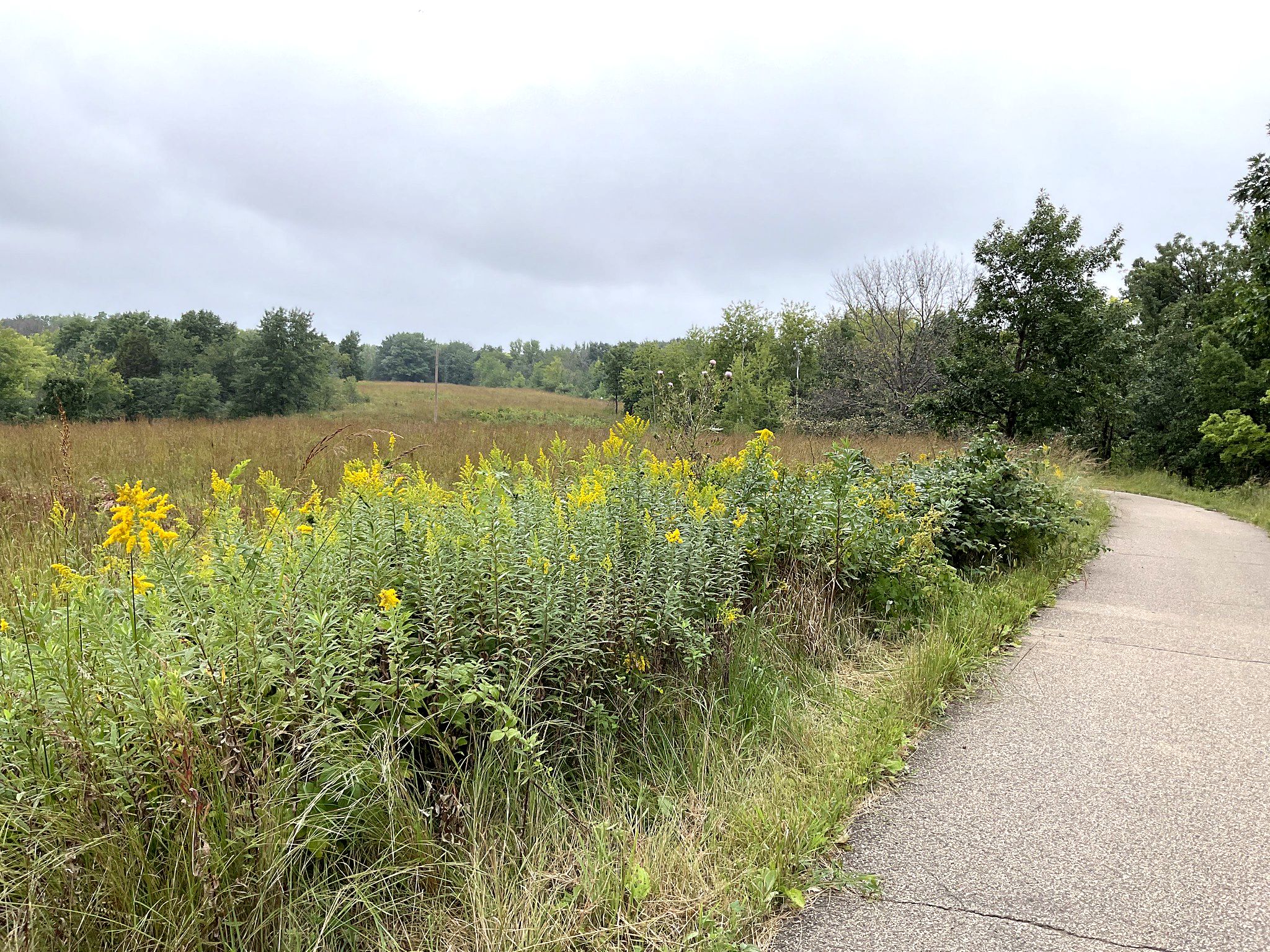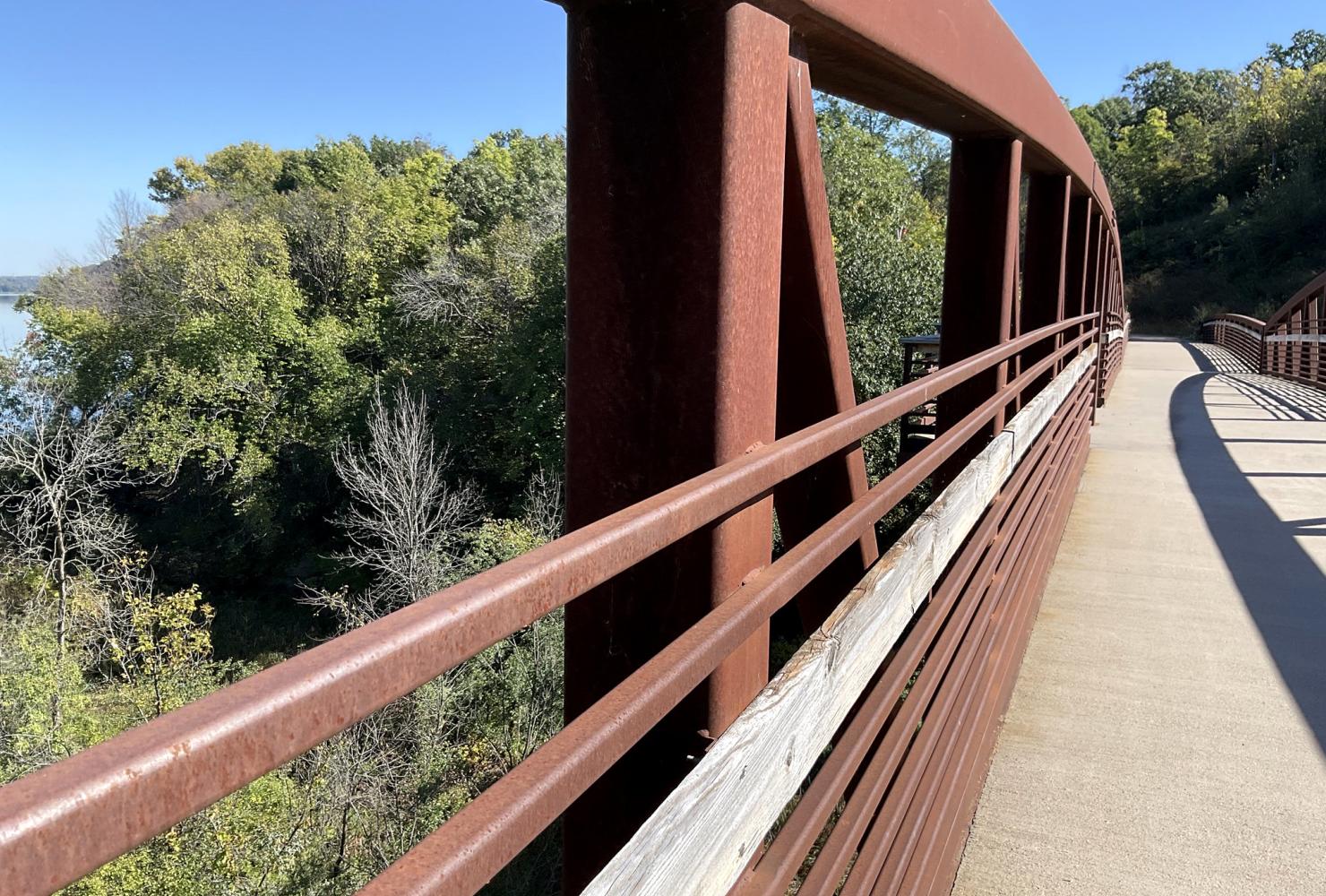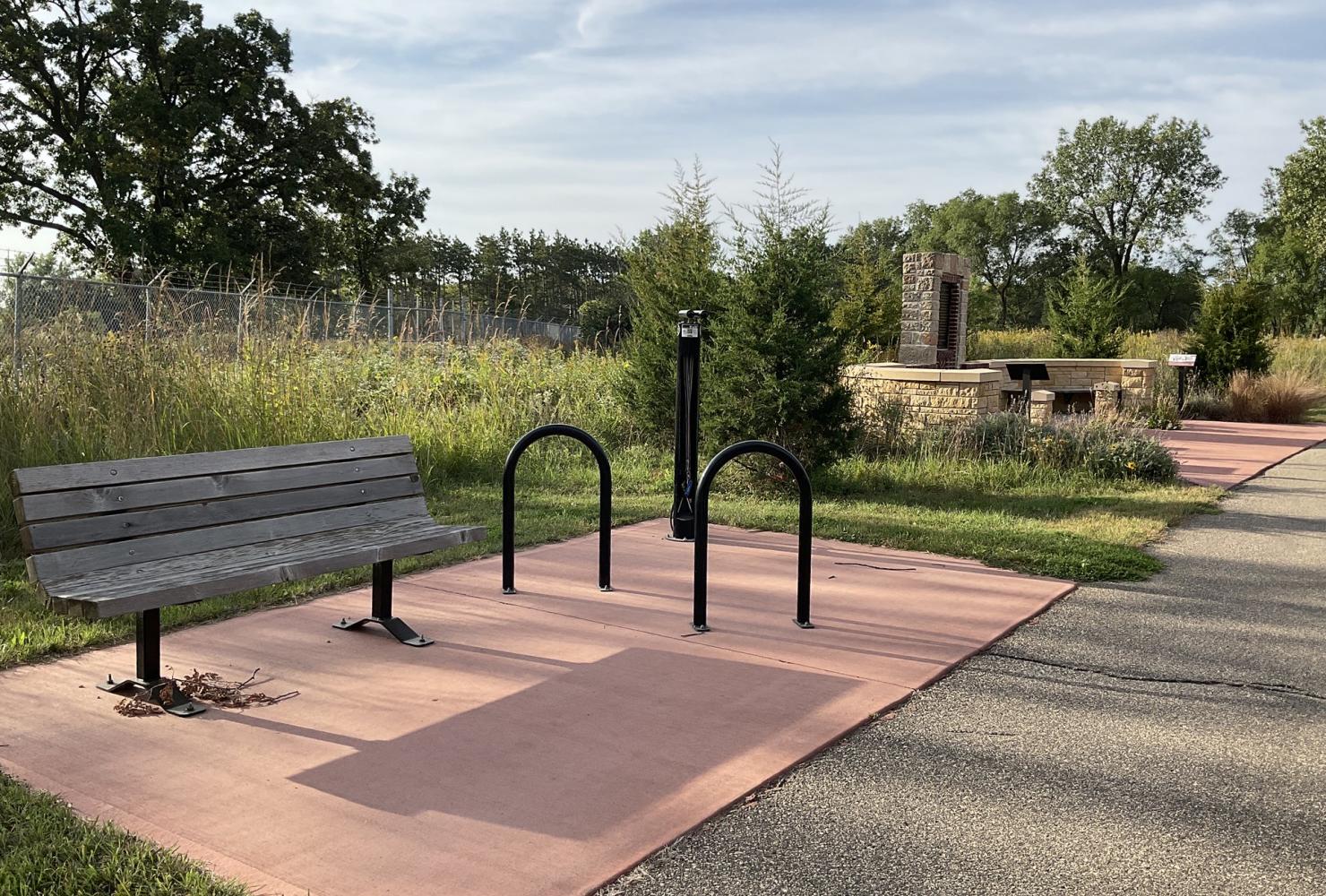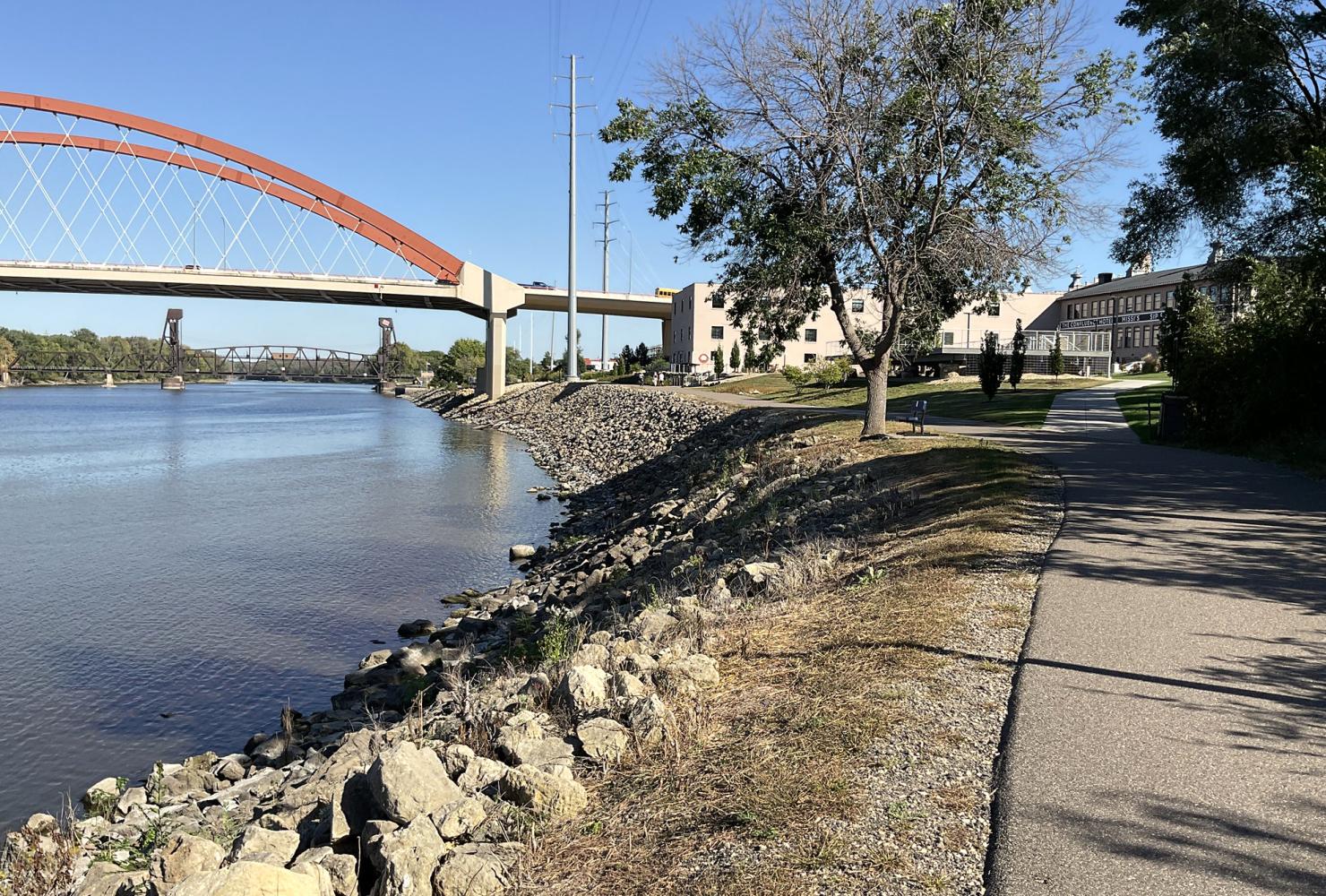FMR plans for habitat beside new riverside greenway trails in Dakota County

The Mississippi River Greenway trail runs through restored prairie at Pine Bend Bluffs SNA where FMR has been protecting and restoring habitat for over 15 years. We're thrilled to plan for more habitat along the rest of the trail.
Recently, Dakota County enlisted Friends of the Mississippi River to plan habitat stewardship along two riverside trails: the Mississippi and Vermillion River Greenways.
Through residential and commercial development, these greenways are essentially ribbons of parks, woodlands, prairies and wetlands connected by regional trails. Already, the Mississippi and Vermillion Rivers provide important connectivity for wildlife migration. The greenway trails create another natural frame within which to establish habitat corridors.
Over the past two years, the Land Conservation team has been studying the ecology along the greenways as we worked on natural resource management plans for each trail, an intensive undertaking.
First, we identified all the "habitat nodes" or natural areas that fall within the 100 to 300-foot trail easement. Then, we considered how some of the spaces between these nodes could form true habitat corridors by converting even small slivers of land into native plant communities. For example, some of these small slivers are currently mowed grassy areas that could be planted with native flowers and grasses — small pockets of important nectar and nesting resources. These conversions to native plants would also reduce the amount of long-term maintenance mowing.
Through our ecological survey work, we also identified and prioritized opportunities to enhance existing habitat and restore stretches of land where habitat is degraded. Dakota County will use these plans to build upon partnerships created while planning and building the greenway trails and collaborate with us on restoration implementation.
Not only do these greenways create long stretches of wildlife habitat, but they also create easy human access to green space.
In the urban areas of Dakota County, where opportunities are limited to establish large regional parks, greenways bring parks to people. The greenways require little land but offer many benefits, including almost 40 miles of trails for people to roll, walk, bike and be in nature.
Vermillion River Greenway
FMR's first foray into greenway planning was the creation of the Vermillion River Greenway Natural Resources Management Plan in 2022. About 4 miles of this trail have been constructed along the Vermillion from downtown Hastings west to General Sieben Drive in western Hastings. Eventually, the east-west trail will follow nearly 20 miles of the river and connect the cities of Farmington and Hastings.
Being near the Vermillion River allows people to experience a unique waterway for the Upper Midwest. A 13-mile stretch of the Vermillion is designated a trout stream, which is uncommon in the metro area. Wide wet meadows and floodplain forests flank its banks. The finished portion of the trail weaves through several places where FMR has restored habitat in the last 20 years, including Vermillion Linear Park, Vermillion Falls Park and Old Mill Park.
Our fieldwork for the Vermillion River Greenway plan also helped us identify two new opportunities for restoration. We noted that a pair of Dakota County conservation areas along the greenway would benefit from habitat improvements, and in 2024, we helped secure funding from the Minnesota Board of Water and Soil Resources Habitat Enhancement Landscape Program to implement restoration on those 37 acres beginning in 2025.
Mississippi River Greenway
In 2024, we were awarded the contract to take on additional greenway planning for the Mississippi River Greenway Natural Resources Management Plan. This 26-mile greenway follows the Mississippi from the southern edge of South Saint Paul through Inver Grove Heights into Rosemount and Hastings. Most of the trail construction is complete. A final 2-mile stretch west of Spring Lake Park will be done in 2024 or early 2025. A planned 7-mile section will connect Hastings to the Red Wing Trail along the Vermillion River and extend to the southern Dakota County border with Goodhue County.
It might go without saying that FMR was uniquely suited to help create this plan. Our long history of helping to steward the Mississippi's watershed gave us some good insights into how to improve habitat along this corridor. We readily identified restoration needs at Pine Bend Bluffs SNA, Spring Lake Park and Hastings River Flats Park. But, we were also excited about the challenge of planning restoration in parks with ball fields and picnic shelters like at Kaposia Park in South Saint Paul. Even small riverside parks like those in Inver Grove Heights are brimming with opportunities to create additional habitat and make corridors more robust.
Joe Walton, senior ecologist at Dakota County, told us that the county chose FMR to lead this effort partly because of our experience with developing plans like these, our prior work in this project area, and our "proven commitment to restoration and conservation within the Mississippi River corridor." Walton continued, "FMR stands out as a planning partner because their thoroughness and level of detail is excellent, they are easy to work with and responsive to requests, and their professionalism and quality of workmanship has always been top-notch."
Expanding access and connected habitat for the future
FMR has been working with project partners, particularly along the Mississippi River Greenway, to improve habitat for over 20 years. Contemplating the restoration of connected places where we haven't worked yet has expanded our imagination about what's still possible in these developed areas. Thinking about the links between plant community restoration and its effect on wildlife habitat and, in turn, the benefits of humans interacting with these newly amazing places has given us an opportunity to see our work from a much broader perspective.
So many great things are coming together to create and improve these greenways for people and wildlife. We're especially inspired to see that, as a result of this big-picture vision and planning we got to lead, even more places can be restored, strengthening the vital ribbons of habitat along these special rivers.


